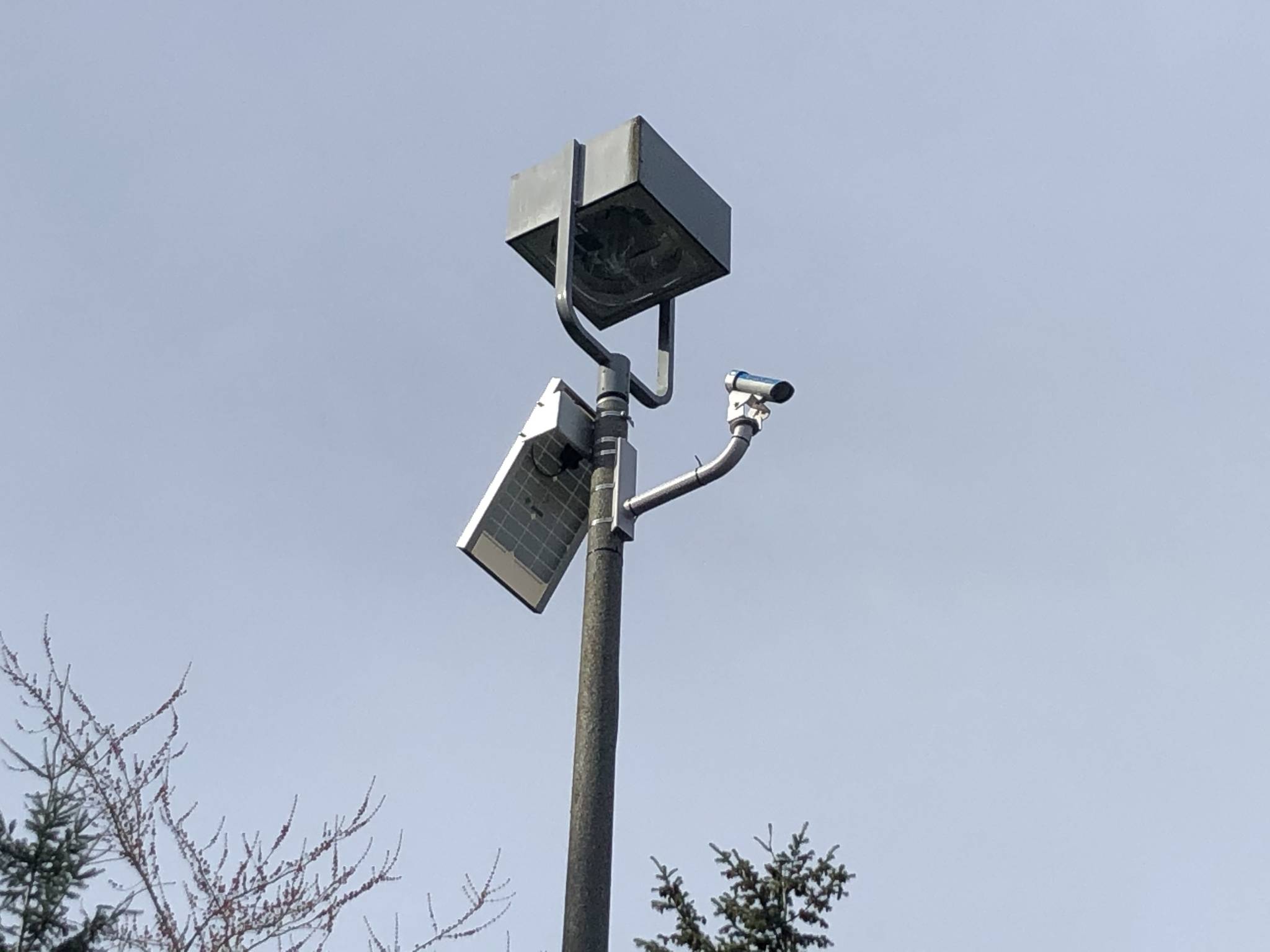With the parts available to install the city’s first laser pavement temperature sensor and the February snowstorm in the forecast, it was the ideal time to set things in motion.
In a collaboration between the Mercer Island IT and Public Works departments, the sensor unit was installed on a light pole in the City Hall parking lot during the week prior to the storm.
“The location was selected due to the microclimate, which results in the area being among the first to freeze on the Island,” said Brian Hartvigson, the city’s right-of-way and stormwater manager.
Hartvigson said the installation was already on the city’s agenda the previous year, but COVID put a halt to some of their plans.
“What better opportunity than the snowstorm? There was definitely some some high focus on our part and IT to get that up and running. So we expedited it. It proved useful,” said Hartvigson, noting that the system was configured and installed by IT Department Manager Alfredo Moreno.
Hartvigson described the sensor as a laser thermometer accompanied by a solar panel unit that’s mounted to the light pole. The sensor is directed at a certain fixed point on the pavement that’s clear of obstruction so they can get an accurate and real-time reading of the pavement temperature. Workers can then begin applying de-icing treatments to the roadway.
“It actually raises the surface temperature of the pavement and it alerts us via email when it hits a threshold temperature,” he said. “Ideally, when we’re doing the pre-treatment, you want to have it at 37 degrees and falling to expected freezing temperature at some time in the next 12 hours.”
It’s counterproductive to apply the de-icer when the weather is above the temperature threshold because the road will become slicker, he added.
Other locations that Hartvigson, Moreno and their department members have determined to be Island microclimates — spots where they notice freezing occurring faster — are areas around the 5500 block of West Mercer Way and Southeast 71st Street and West Mercer Way.
The city hopes to install at least two more sensors by the end of this year and possibly five more within the next two years.
“The pavement sensor we recently installed is a small step in realizing a vision of providing a tool to decision makers that provides a quick real-time overview of city operations who can then quickly triage developments,” said Moreno, adding that an online dashboard would display water meters reporting leaks, an incoming fire response, multiple service requests reporting down trees on a roadway and more.


